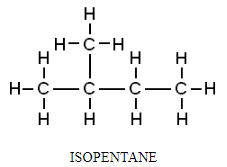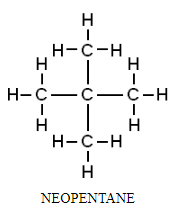
How does molecular geometry affect the melting point of an organic compound?
Answer
448.2k+ views
Hint:Atoms of a molecule, when arranged in a three-dimensional structure, give the molecular geometry of that molecule. There are various geometrical parameters that determine the shape of a molecule and the position of the atoms in it. Some of the parameters are molecular bond length, torsional angles, molecular bond angles, etc
Complete step-by-step answer:The temperature at which the substance changes its state from solid-state to liquid state is known as the melting point of that substance. There are various factors affecting the melting point of a substance. Three of the main factors are the size and composition of the molecule, the number of impurities in a sample compound, and the forces of attraction.
Now, let us try to understand how the geometrical shape of a molecule affects the melting point of the organic compound. There are two factors corresponding to the molecular geometry of a molecule that has an effect on its melting point
1. Size of the molecule: If two compounds exist in similar conditions, the melting point of the compound having a smaller size will be lower.
This is because, in small compounds, molecules are bonded by intermolecular forces whereas macromolecules are bonded by covalent bonds. Since covalent bonds are much stronger than intermolecular bonds, the energy required to break them is high and hence large compounds have a higher melting point than small compounds.
For example, while the melting point of ethanol is
2. Packing of the molecule: A compound in which the molecules are packed together tightly will have a higher melting point than the compounds whose molecules are loosely packed or do not pack well.
For example, among isomers of pentane, isopentane has a lower melting point than symmetrical neopentane because its atoms are more loosely packed.


Note:The melting point of a substance can be used to find the presence or absence of impurity in an organic compound. A substance will usually have a melting point range within one to two degrees. But when there is an existence of impurity in an organic compound, the range of the melting point will broaden.
Complete step-by-step answer:The temperature at which the substance changes its state from solid-state to liquid state is known as the melting point of that substance. There are various factors affecting the melting point of a substance. Three of the main factors are the size and composition of the molecule, the number of impurities in a sample compound, and the forces of attraction.
Now, let us try to understand how the geometrical shape of a molecule affects the melting point of the organic compound. There are two factors corresponding to the molecular geometry of a molecule that has an effect on its melting point
1. Size of the molecule: If two compounds exist in similar conditions, the melting point of the compound having a smaller size will be lower.
This is because, in small compounds, molecules are bonded by intermolecular forces whereas macromolecules are bonded by covalent bonds. Since covalent bonds are much stronger than intermolecular bonds, the energy required to break them is high and hence large compounds have a higher melting point than small compounds.
For example, while the melting point of ethanol is
2. Packing of the molecule: A compound in which the molecules are packed together tightly will have a higher melting point than the compounds whose molecules are loosely packed or do not pack well.
For example, among isomers of pentane, isopentane has a lower melting point than symmetrical neopentane because its atoms are more loosely packed.


Note:The melting point of a substance can be used to find the presence or absence of impurity in an organic compound. A substance will usually have a melting point range within one to two degrees. But when there is an existence of impurity in an organic compound, the range of the melting point will broaden.
Recently Updated Pages
Master Class 11 Economics: Engaging Questions & Answers for Success

Master Class 11 Business Studies: Engaging Questions & Answers for Success

Master Class 11 Accountancy: Engaging Questions & Answers for Success

Master Class 11 English: Engaging Questions & Answers for Success

Master Class 11 Computer Science: Engaging Questions & Answers for Success

Master Class 11 Maths: Engaging Questions & Answers for Success

Trending doubts
State and prove Bernoullis theorem class 11 physics CBSE

1 ton equals to A 100 kg B 1000 kg C 10 kg D 10000 class 11 physics CBSE

State the laws of reflection of light

One Metric ton is equal to kg A 10000 B 1000 C 100 class 11 physics CBSE

1 Quintal is equal to a 110 kg b 10 kg c 100kg d 1000 class 11 physics CBSE

Difference Between Prokaryotic Cells and Eukaryotic Cells




